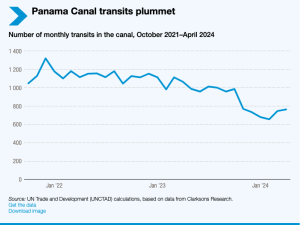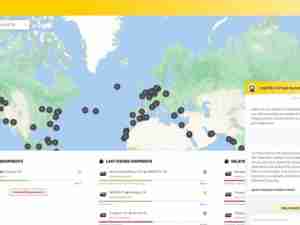In today’s global economy, along with ever-present geo-political unrest, building a resilient supply chain is not just a strategic advantage, it is a necessity. Besides external risk factors, procurement fraud in the UK cost the private and public sectors £157.8 billion and £50.2 billion respectively.
Among the myriads of strategies that organisations must employ to mitigate risk, source-to-contract can help teams seamlessly integrate sourcing and contract processes to ensure that operations run safely and smoothly, standing out as a crucial method for mitigating risks and enhancing efficiency.
Jack Macfarlane, Founder and CEO of DeepStream, discusses the stages of source-to-contract management, the advantages it can offer procurement teams, and how common risks can be mitigated.
Understanding source-to-contract management
Source-to-contract management is a strategic procurement process that spans the procurement lifecycle, from sourcing suppliers to finalising contracts. This process is designed to streamline operations, ensure supplier reliability, achieve fair and competitive pricing and fortify the overall security of the supply chain.
Historically reliant on manual methods, modern source-to-contract management has embraced digitalisation, incorporating technologies like artificial intelligence to automate and secure procurement processes. This evolution allows for real-time data analytics, enhanced decision-making, efficient supplier performance monitoring and better adaptability to market disruption and demand.
The primary aim of source-to-contract management is to identify and secure contracts with the best quality suppliers of the products or services a business requires but at the most attractive price on the market.
A structured set of steps are undertaken in the source-to-contract process, beginning with sourcing and vetting suppliers to identify the wheat from the chaff. This involves extensive research, both market-related and internal, to identify a specific sourcing criterion and create a shortlist.
Next, bidding takes place and involves disseminating RFIs, RFPs and RFQs, which can also include a general bid invitation, placing the onus on the supplier to offer a competitive rate for their product or service within a competitive pool of other prospective suppliers.
Finally, a supplier will be chosen based on their ability to fulfil the drafted criteria to the highest standard. A contract must be negotiated, accepted and implemented.
Advantages of source-to-contract management
The source-to-contract approach significantly enhances procurement efficiency by aligning goals and activities at each phase, from the selection to the acquisition of goods and services. This strategic alignment not only streamlines processes but also boosts the return on investment (ROI) potential for businesses by improving financial and operational outcomes.
Tracking the ROI from source to contract involves several key strategies. Firstly, aligning metrics is crucial; understanding and monitoring supplier performance metrics regularly can profoundly influence procurement strategies, ensuring that decisions are data-driven and geared towards efficiency.
Secondly, the ability to track savings explicitly each month allows businesses to quantify the effectiveness of their procurement strategies in real time, providing clear insights into financial benefits.
Beyond the measurable financial returns, the source-to-contract approach also fosters intangible benefits. Creating value in areas like speed and customer satisfaction—though not always quantifiable in monetary terms—can significantly enhance competitive advantage and customer loyalty.
Moreover, effective communication and the development of trust between departments can further refine procurement processes, leading to continuous improvements and better alignment with business goals.
The additional benefits of a well-implemented source-to-contract strategy are manifold. Cost reduction is one of the most immediate benefits, as effective sourcing strategies make it easier to find competitive supplier rates, thus directly improving the bottom line. This approach not only cuts costs but also aids in managing financial gains more sustainably over the long term.
Strengthening business relationships is another critical advantage. The source-to-contract process facilitates greater information sharing and communication between buyers and suppliers, which enhances supply chain cohesion and helps in managing expectations.
This improved relationship fosters trust and transparency, enabling better management of supply chain risks such as shortages or the bullwhip effect, where small fluctuations in demand at the retail level cause progressively larger fluctuations up the supply chain.
Moreover, these strong supplier relationships enhance decision-making capabilities. With a deeper understanding of the supply chain dynamics and greater trust among stakeholders, businesses can anticipate future challenges more effectively and implement strategies to mitigate potential impacts. This proactive approach not only limits the adverse effects of supply chain disruptions but also positions the company better within the market.
In conclusion, source-to-contract management not only offers substantial ROI through direct cost savings and enhanced efficiency but also strengthens supplier relationships and improves overall business resilience. This holistic improvement in procurement and supply chain management makes it an indispensable strategy for businesses aiming to thrive in competitive markets.
Mitigating common risks during the process
The structured framework of proper source-to-contract management, with its stringent controls, transparency, and enhanced accountability, effectively improves vendor management strategies and ensures robust contractual management. These elements are critical in mitigating risks and safeguarding businesses.
However, the efficacy of source-to-contract in risk mitigation is contingent upon its correct implementation. A comprehensive source-to-contract process encompasses effective communication, meticulous document management, vigorous bid platforms, and proficient data collection and reporting capabilities. Nonetheless, common pitfalls such as inaccurate needs analysis, poor vendor selection, and disorganised vendor management can increase the risk of fraud and legal challenges.
To address these challenges, automation and digitalisation play pivotal roles. They enable real-time data analytics, facilitate more informed decision-making, enhance efficiency in monitoring supplier performance, and provide the agility to respond to market disruptions and shifts in demand. Additionally, the deployment of centralized digital platforms supports real-time, thorough auditing processes, making it simpler to identify discrepancies and reduce the risk of fraud.
However, there is a downside to advanced technology. Sophisticated software designed to automate procurement processes can be susceptible to misuse. For instance, such software can be manipulated to alter data, conceal suspicious activities, produce fraudulent invoices, or unfairly influence vendor selection during the bidding process. This underscores the necessity for vigilant oversight and robust security measures in the implementation of technological solutions within source-to-contract management.









